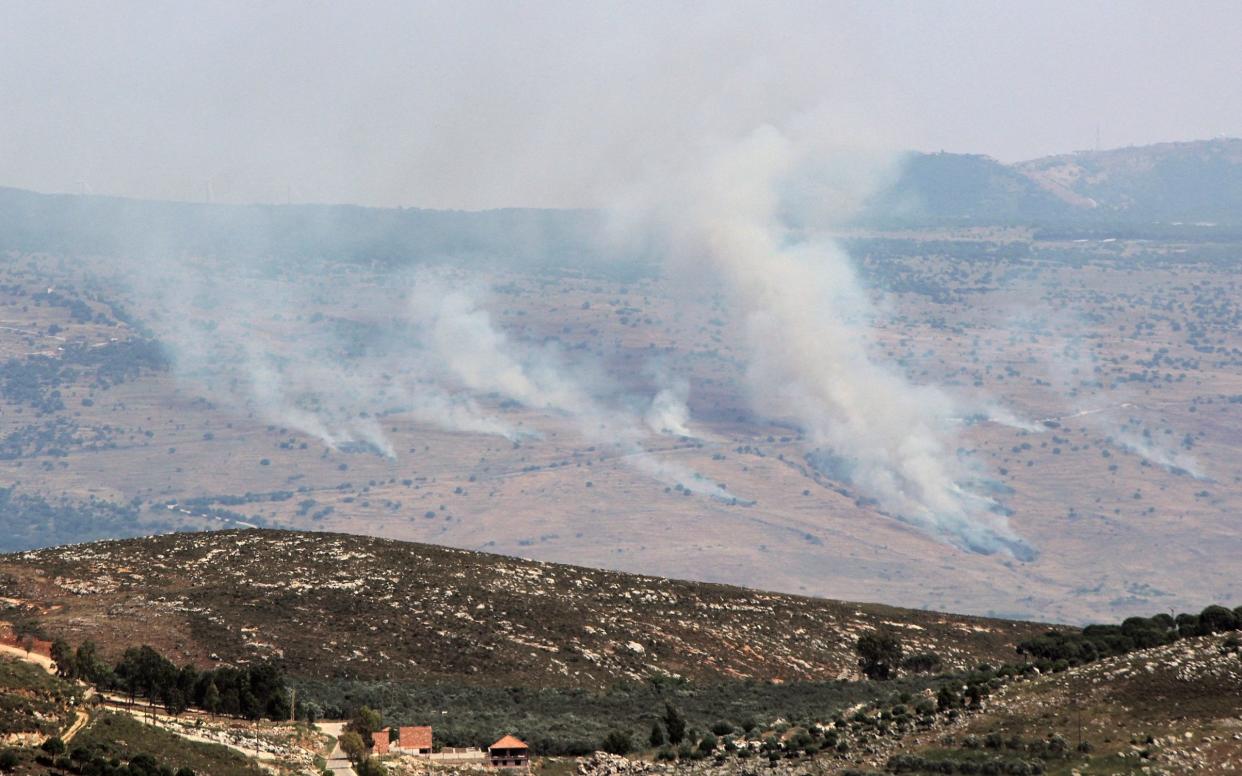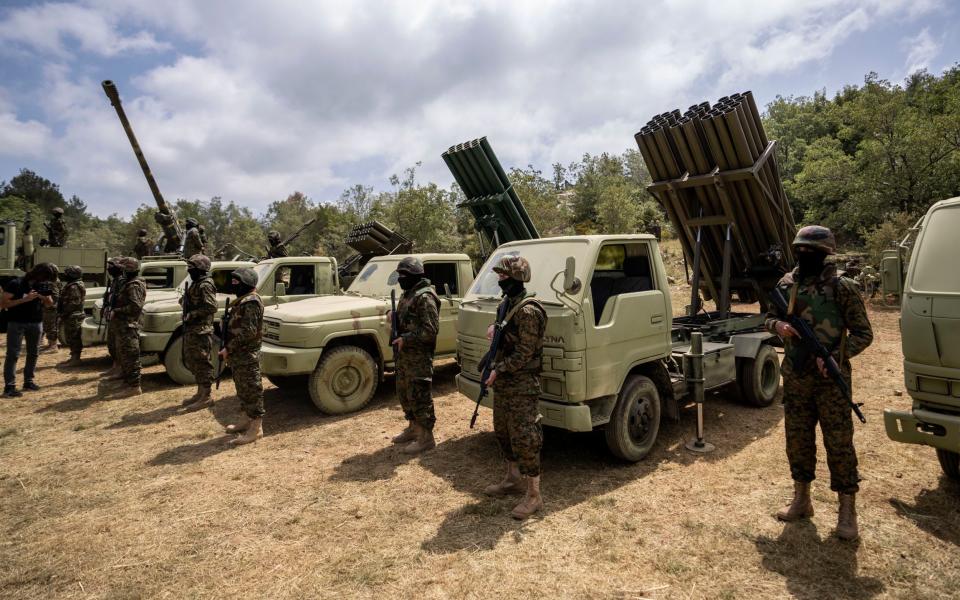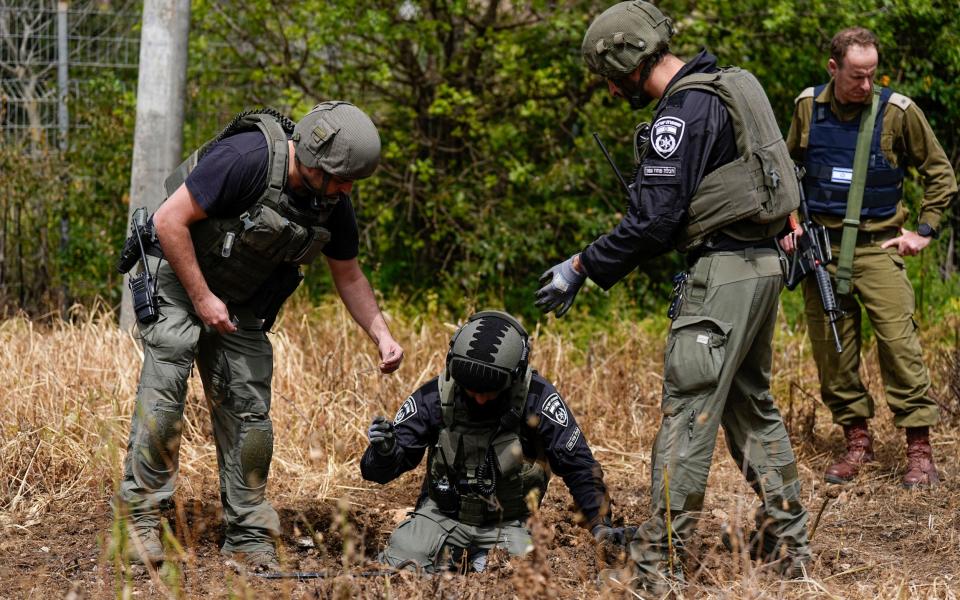Hezbollah firing more advanced weaponry as it ups pressure on Israel

Hezbollah this week unveiled new weaponry, struck deeper within Israel and executed more complex attacks as the Lebanese paramilitary force steps up its offensive on Israel’s northern border following the incursion into Gaza’s Rafah city.
On Thursday afternoon an adapted kamikaze drone carrying two missiles flew across the Lebanese border and dodged Israel’s Iron Dome. It released one S-5 rocket, then another, before the drone exploded on the target itself. The attack marked Hezbollah’s first-ever airstrike and injured three Israeli soldiers.
According to the group, the S-5 rockets attached to the kamikaze drone were 1.4 metres long, had a 55mm calibre, weighed five kilograms and could travel up to four kilometres. The party said the missiles were unguided, had a high-explosive warhead and could be used by helicopters and warplanes.
Throughout the seven-month conflict, Iran-backed Hezbollah, one of the most heavily armed non-state groups in the world, has slowly lifted the lid on more of its highly secretive military capabilities.
The use of more advanced weaponry – including drones capable of firing missiles, explosive drones and small types of guided missiles known as Almas, or Diamond – has also come alongside fewer fighters operating on the border area, a tactic to reduce the number of casualties the group faced at the beginning of the conflict.

Israeli media on Friday said that the first visual evidence of Hezbollah having advanced Iranian anti-aircraft missiles had emerged.
Following an Israeli airstrike in Najjarieh, southern Lebanon – which Israel says targeted Hezbollah compounds – footage circulated on social media appearing to show the remains of an Iranian Sayyad-2 surface-to-air defence missile. The Telegraph could not immediately verify where the video was filmed.
Earlier this week, Hezbollah also carried out what the IDF confirmed to be its deepest strike inside Israel, targeting a military site 21 miles away from the Lebanese border. The strike – which used three anti-tank guided missiles – was 12 miles deeper than any other it has carried out and hit Sky Dew, Israel’s $230 million (£181 million) radar detection blimp.
In response, Israel – who has demanded Hezbollah be removed from its border – has continued to hammer Hezbollah and Hamas targets in Lebanon with airstrikes, stretching from the south to the north-east of the country. At least 82 civilians have been killed and more than 300 fighters. Israel says 14 soldiers and 11 civilians have been killed on its side of the border.
“We will return the residents of the North to their homes,” Yoav Gallant, Israel’s defence minister said this week. “We want to exhaust every chance to do it by agreement because we know that war has costs, and we prefer to avoid it.”

On Friday, Sayyed Hashem Safieddine, head of Hezbollah’s executive council, warned Israel the group is again “ready to use new weapons,” on the battlefield.
Despite escalations from Israel and Hezbollah, analysts still consider Israel’s second front to be “contained”, although the risk of it spilling into a wider war is soaring. Diplomats have struggled to bring the fighting to an end as Hezbollah vows to continue until the war in Gaza is over.
“We have multiple options that are guaranteed to succeed and to exhaust the enemy,” Mr Safieddine said. “If the enemy wants to continue the fight, we are ready to use new weapons,” he added.
“This is a time of major changes.”

